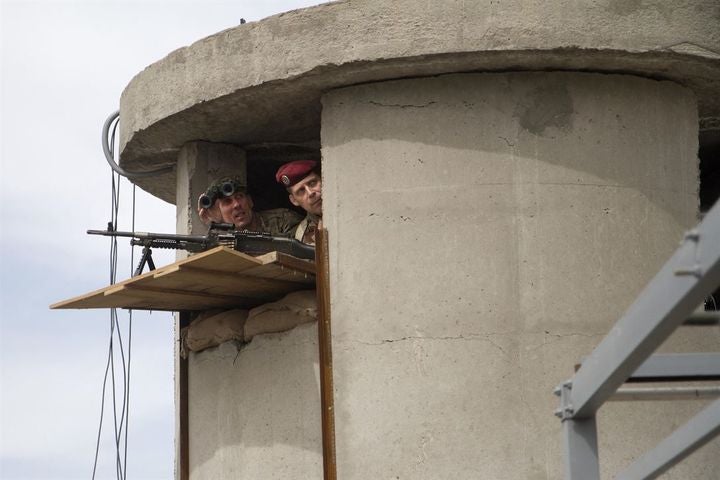Two years after 9/11, in 2003, I was invited, as a prominent terrorism risk analyst, to attend a Muslim-Western relations dialog meeting hosted by Prince Hassan of Jordan at the high-security Amman Marriott Hotel. Among the dignitaries was an Egyptian man who once had shared a Cairo prison cell with Dr. Ayman al-Zawahiri. As the chief strategist of al-Qaeda, al-Zawahiri was a central figure in masterminding the terrorist campaign against the U.S. and its Western allies.
Unlike risk from natural hazards, terrorism risk is intrinsically adversarial. Understanding the strategy of an adversary is essential for modeling terrorism risk and is crucial for the game-theoretic terrorism analysis pioneered by RMS® in the months after 9/11.
Intent, capability, and opportunity are the three factors that drive the use of terrorist weaponry. It was known that al-Qaeda had made attempts to procure a nuclear weapon, but whether the group would have the intention actually to deploy such a weapon was uncertain.
In Amman in 2003, I was told unequivocally by the Egyptian delegate who knew al-Zawahiri very well that he would have no hesitation in pressing the nuclear button. The fear of a U.S. or Western response would not provide a compelling enough reason for Osama bin Laden, al-Zawahiri, or any of the core al-Qaeda operatives to stop the use of chemical, biological, radiological, and nuclear (CBRN) weapons.
This information was fed into the RMS logic tree for calculating the nuclear threat. An extremely dangerous and ruthless terrorist, al-Zawahiri was one of the most wanted by the FBI and with a US$25 million bounty. In 2006, he warned of an al-Qaeda plot that would be bigger than 9/11.
This was the liquid explosives plan to bring down seven passenger jets over the Atlantic. Fortunately, unlike 9/11, this plot was interdicted by Western intelligence and the London-based terrorists were jailed. Terrorism insurance is, effectively, insurance against the failure of counterterrorism.
After the death of Osama bin Laden in 2011, al-Zawahiri took over the leadership of al-Qaeda. As with the liquid explosives plan, other large-scale, ambitious al-Qaeda plots that involved many operatives, such as the hijacking of the Pakistan Navy frigate the PNS Zulfiqar in 2014, failed because of the intensive surveillance of Islamist militants. A process of contact chaining was used, not only for known terrorists but their contacts, and the contacts of these contacts were tracked electronically. Too many terrorists spoil the plot.
Under al-Zawahiri’s leadership, al-Qaeda has provided a central source of Islamist support for loosely affiliated groups across Asia, Africa, and the Middle East. Within the Islamist diaspora in Western countries, there are many who have been indoctrinated by local extremist Muslim leaders, whose worldview has been warped by the vehemently anti-Western pronouncements of al-Zawahiri. In recent years, he has kept a low profile, but his extensive library of confrontational video messages remains influential in sustaining an ideal of Islamist rule.
Even if effective counterterrorist action mitigates terrorism risk through sustained plot interdiction, the ideal of an Islamic state itself cannot be eradicated, nor the aspirations of militants are extinguished. It was said of the status of Afghanistan after the toppling of the Taliban following 9/11: “Americans have the watches; the Taliban have the time.” Several decades later, on August 15, 2021, the Taliban returned to power over the Islamic Emirate of Afghanistan, a state under Islamic law (Sharia).
Ayman al-Zawahiri was welcomed back to Afghanistan’s capital Kabul, after living in the outlying Helmand province. As with Osama bin Laden in Abottabad, Pakistan, al-Zawahiri and his family were provided with a safe house to stay in, with no need for him to venture out except for some occasional fresh air.
While al-Zawahiri was on the balcony of his house, taking the morning air on Sunday, July 31, two lethal Lockheed-Martin R9X Hellfire missiles armed with six blades, rather than explosives, were fired from a U.S. drone at 6:18 a.m. local time. Taliban spokesperson Zabihullah Mujahid condemned the early-morning strike on a house in the upscale residential Sherpur neighborhood of Kabul as a violation of international principles.
The U.S. Secretary of State Anthony Blinken issued a statement justifying this drone strike: “By hosting and sheltering the leader of al-Qaeda in Kabul, the Taliban grossly violated the Doha Agreement and repeated assurances to the world that they would not allow Afghan territory to be used by terrorists to threaten the security of other countries.”
Ayman al-Zawahiri died as a resident of an Islamic state, which was an aspiration that would have seemed highly implausible in February 2020 when the U.S.–Afghanistan Joint Declaration for Bringing Peace to Afghanistan was signed. As with other notorious terrorists, his legacy is more than just the memory of the plots he masterminded.
He epitomized the principle that terrorism is a thinking man’s game – one that demands both intelligent counterterrorism operations and innovative, thoughtful terrorism risk modeling. Regardless of who takes over as leader of al-Qaeda, the terrorist threat to Western interests is unlikely to change, remaining significant.
Learn more about market-leading RMS Terrorism Risk Models to manage dynamic risk and obtain clear insights.








